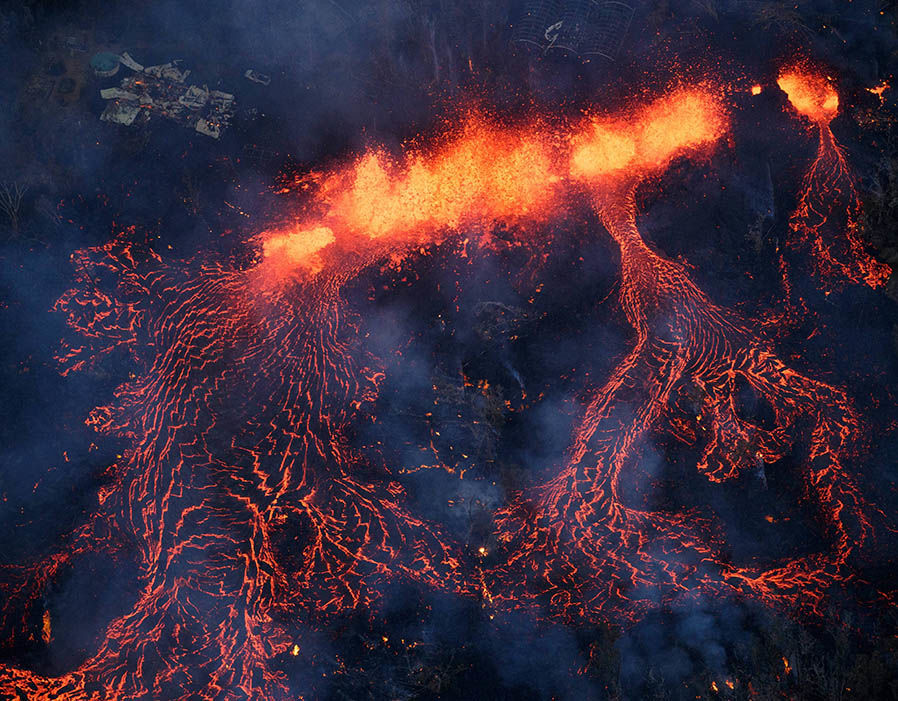Thursday, 14 June 2018
Mount Kilauea crater is collapsing at the volcano's summit and has nearly doubled in size along with 10,000 quakes recorded in six weeks
Photo Express UK
Mount Kilauea shows no sign of loosening its fiery grip on the devastated Big Island.
With new eruptions and the crater nearly doubling in size, here is all the latest information on the volcano.
The volcano, which has devoured around 600 homes so far, has been erupting explosively since May 3.
USGS scientists have reported that the crater at the volcano's summit has nearly doubled since the tightened activity began.
The USGS said: "Inward slumping of the rim and walls of Halema`uma`u continues in response to ongoing subsidence at the summit."
The last measurement of the crater's dimension by scientists was around 1.8km (1.1 miles) wide "which is nearly twice as large as it was before explosions began on May 17, 2018".
Kilauea has been in an active cycle for the last 35 years but turned explosive when a magnitude 6.9 earthquake rocked the area in late April.
This is being cited as an unprecedented event, as there are two eruptions occurring simultaneously. The first is the eruption at Kilauea's summit crater and the second along a six-mile string of fissures 25 miles down its east flank.
Smaller eruptions are occurring regularly from the summit, and some fissures continue to spew molten lava.
Around 9,900 earthquakes have been recorded in the area over the past six weeks.
The lava has provided residents with a host of hazards, from sulphurous gasses to shards of volcanic glass in the air.
The lava is also creating laze - lava haze - a deadly mix of hydrochloric acid fumes, steam and tiny specks of volcanic glass, created when lava hits the ocean.
In addition to the decimated homes, the lava has damaged power and telephone lines and huge swathes of land and roads have been wiped out.
The damage to the island's geothermal plant is still unknown after it was inundated with lava.
Most recently, residents are noticing something a little more pleasant from the eruption: green crystals.
The minerals, called Olivine, have been raining down on homes near the eruption and popping up near the lava flows.
Olivine is very easily weathered, so it is most commonly seen at the earth's surface in the form of sand - resulting in Hawaii's famous green beaches.
U.S. Geological Survey (USGS) scientist Wendy Stovall said the phenomenon is to be expected.
She said: "It's pretty common.
There's often olivine in rocks all over Hawaii." No one has been killed by this period of activity, but one man was seriously injured when he was hit in the leg by a lava bomb.
Scientists are unable to predict when this period of activity could end.
Thanks to: http://www.thebigwobble.org







 Sat Mar 23, 2024 11:33 pm by globalturbo
Sat Mar 23, 2024 11:33 pm by globalturbo


